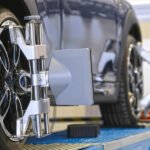

Why Cars Consume Less Fuel at Higher Speeds
When it comes to fuel efficiency, common wisdom suggests that slower speeds are synonymous with greater miles per gallon. However, there exists a fascinating paradox that defies this conventional belief – cars often exhibit better fuel efficiency at higher speeds. In this article, we delve into the intricacies of this phenomenon, unraveling the scientific and engineering principles that contribute to reduced fuel consumption as the speedometer needle climbs.
Aerodynamic Efficiency:
At higher speeds, aerodynamics play a crucial role in shaping a car’s fuel efficiency. When a vehicle accelerates, it encounters increased air resistance, commonly known as drag. Surprisingly, as speed rises, the drag force tends to stabilize, resulting in a more aerodynamically efficient state. Modern cars are designed to cut through the air more smoothly at higher speeds, minimizing the impact of drag and improving overall fuel efficiency.
Optimized Engine Performance:
Internal combustion engines often exhibit peak efficiency at moderate to high speeds. Automotive engineers meticulously design engines to operate optimally within a specific RPM (revolutions per minute) range. At higher speeds, the engine operates closer to its peak efficiency, generating more power per unit of fuel consumed. This efficiency can offset the increased energy demands associated with higher speeds.
Transmission Efficiency:
The transmission system of a car plays a vital role in determining fuel efficiency. At higher speeds, modern transmissions often shift into higher gears, allowing the engine to operate more efficiently. This results in reduced RPM and improved fuel efficiency as the vehicle maintains a steady pace on the road.
Thermal Efficiency:
Internal combustion engines operate more thermally efficiently at higher speeds. Higher speeds often mean higher temperatures, which can contribute to more complete combustion of the fuel-air mixture within the engine cylinders. This enhanced combustion efficiency translates to a higher proportion of the fuel’s energy being converted into useful work, leading to improved fuel efficiency.
Rolling Resistance:
Contrary to common perception, rolling resistance (friction between tires and the road) tends to have a relatively small impact on fuel efficiency at higher speeds. While rolling resistance does increase with speed, it is overshadowed by the gains achieved through improved aerodynamics, optimized engine performance, and efficient transmission operation.
Efficient Fuel Injection:
Modern fuel injection systems are designed to adapt to different driving conditions. At higher speeds, electronic fuel injection systems can precisely control the amount and timing of fuel delivery, ensuring a more efficient combustion process. This fine-tuned control contributes to improved fuel efficiency even as speed increases.
Conclusion:
In the intricate dance of mechanical and aerodynamic forces, cars reveal a paradoxical truth – they often consume less fuel at higher speeds. As automotive engineering continues to advance, manufacturers leverage technology to optimize performance and efficiency across a broad spectrum of driving conditions. The interplay of aerodynamics, engine design, and transmission efficiency at higher speeds challenges our conventional understanding of fuel efficiency, reminding us that the road to sustainability may be paved with surprises.
Add a comment Cancel reply
Categories
- Car Gadgets (17)
- Car News (33)
- Car Reviews (43)
- Car Wars (7)
- Mechanicals (32)
- Uncategorized (2)
Recent Posts
About us

Popular Tags
Related posts


Essential Car Repair Skills Every Driver Should Know

All About Wheel Balancing








